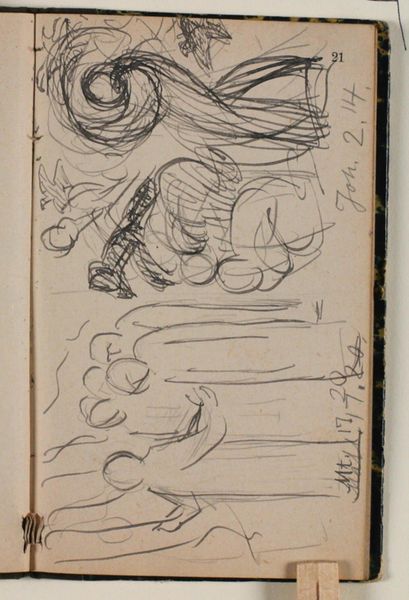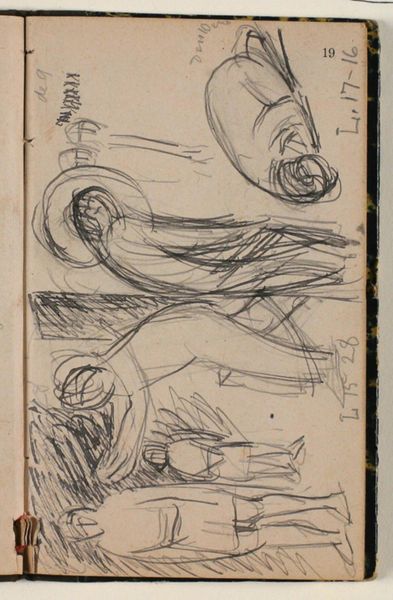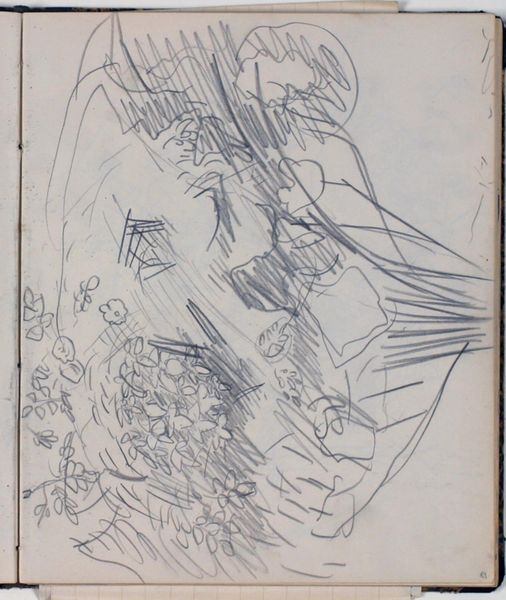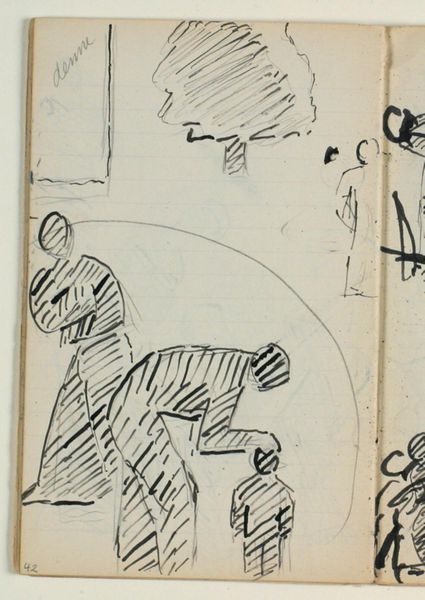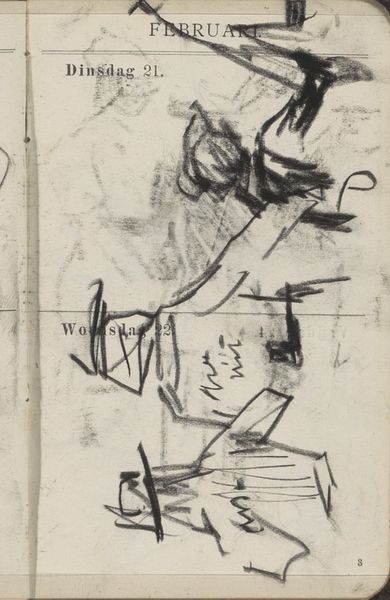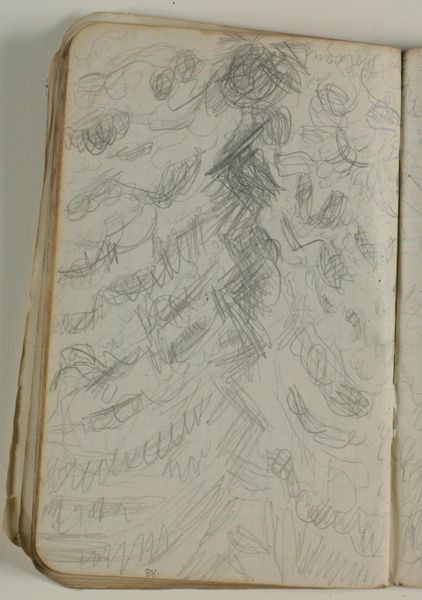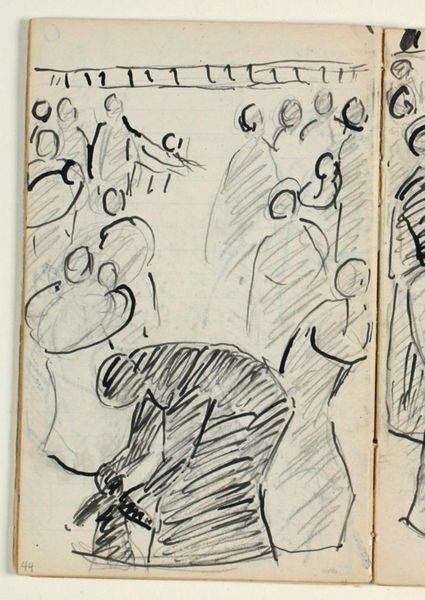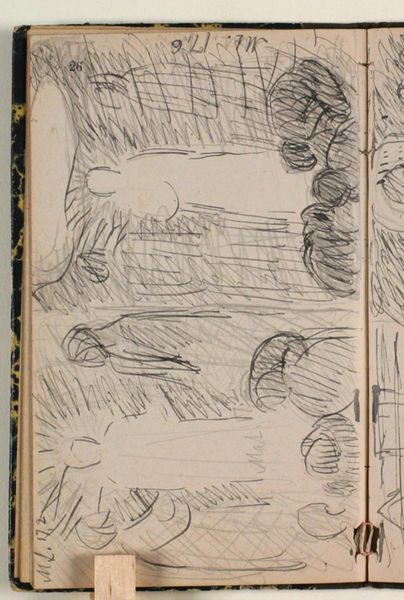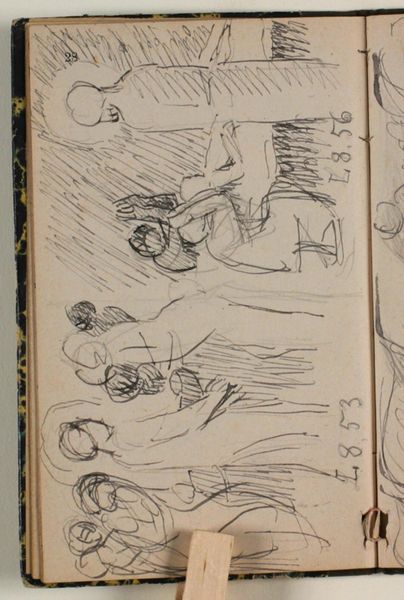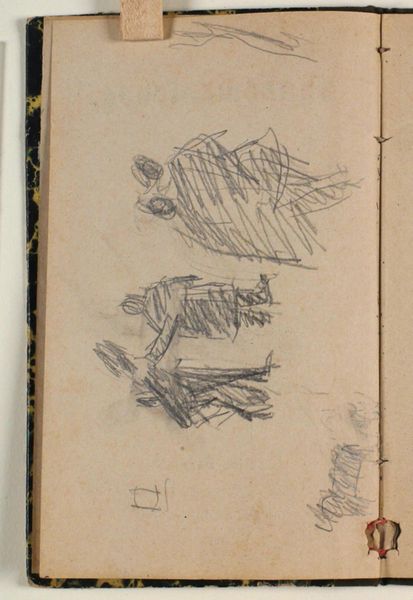
Udkast til bibelsk motiv. Stormen over søen 1864 - 1941
0:00
0:00
drawing, pencil
#
drawing
#
landscape
#
figuration
#
pencil
Dimensions: 153 mm (height) x 93 mm (width) (monteringsmaal), 153 mm (height) x 93 mm (width) (bladmaal)
Editor: So, here we have "Sketch for a Biblical Motif. The Storm on the Lake," by Niels Larsen Stevns, dating from 1864 to 1941, made using pencil. It's...chaotic. Like a snapshot of pure anxiety. What do you see in this piece? Curator: I see the churning depths of faith and fear intertwining. Consider how the storm, visually, is almost a halo of chaotic energy surrounding these figures. Doesn’t that resonate with the idea of divine wrath or, perhaps, divine testing? Look at how the figures are huddled. What biblical narrative do you think the artist has extracted to tell? Editor: It does look like the figures are seeking refuge… Maybe it is the story of the storm on the Sea of Galilee, with Jesus and his disciples? I remember the gospel emphasizing their fear despite Jesus's presence. Curator: Precisely. The pencil strokes themselves contribute to this. Notice how Stevns doesn’t offer neat, contained lines. It's raw. The scribbled intensity could mirror the psychological turmoil of those caught in a crisis of faith, wouldn’t you agree? Editor: I see what you mean. It makes you wonder if he’s capturing the literal storm or the storm within. How would this preliminary sketch be interpreted later in the larger finished piece? Curator: That's the golden question, isn't it? These symbols -- boat, storm, the group huddled together -- are the building blocks of meaning. They tap into deeply ingrained cultural memory about faith and doubt. I wonder what medium the later iteration adopted to render this motif. Editor: So, even in this simple sketch, there's a whole universe of interpretation waiting to be unpacked. I learned a lot from interpreting the visual symbolism here. Curator: As did I. Thinking about art as an accumulation of cultural memory, carried forward in simple yet evocative strokes, is always deeply compelling.
Comments
No comments
Be the first to comment and join the conversation on the ultimate creative platform.
